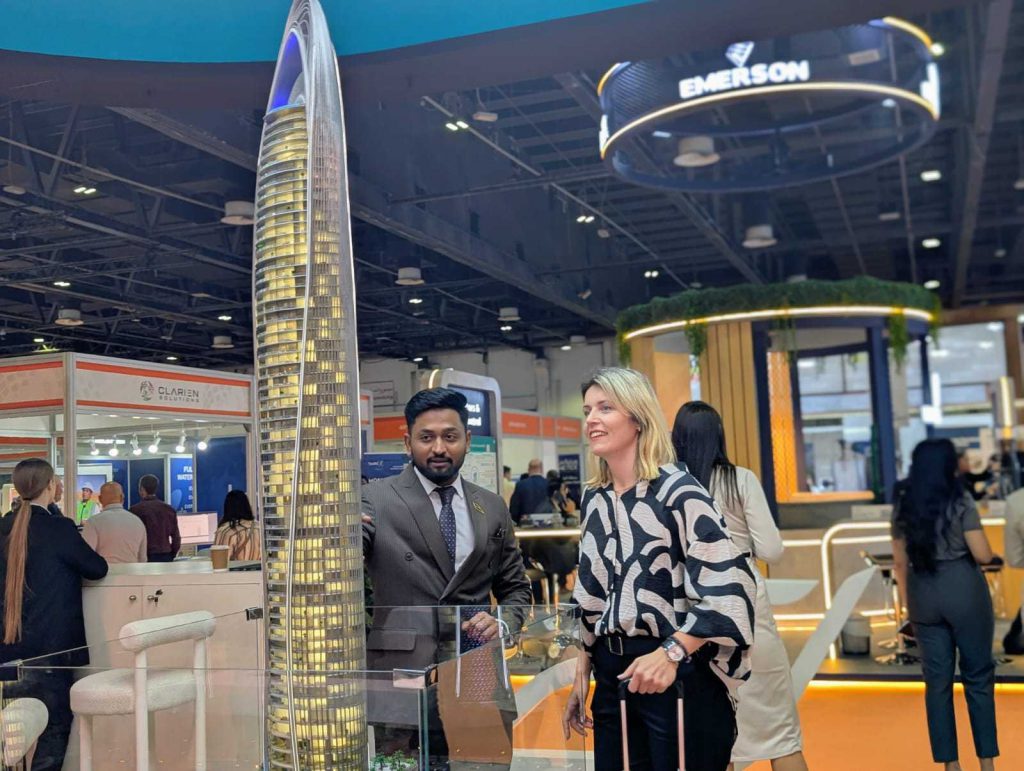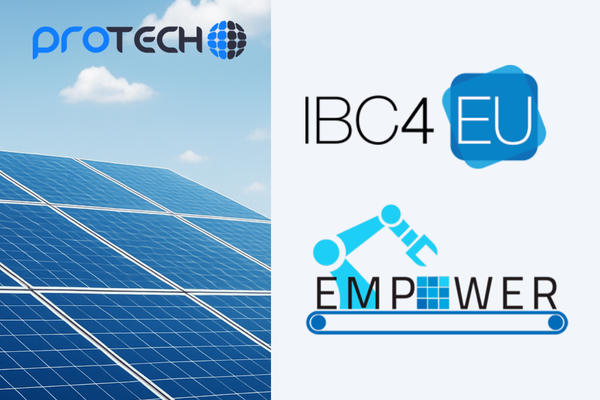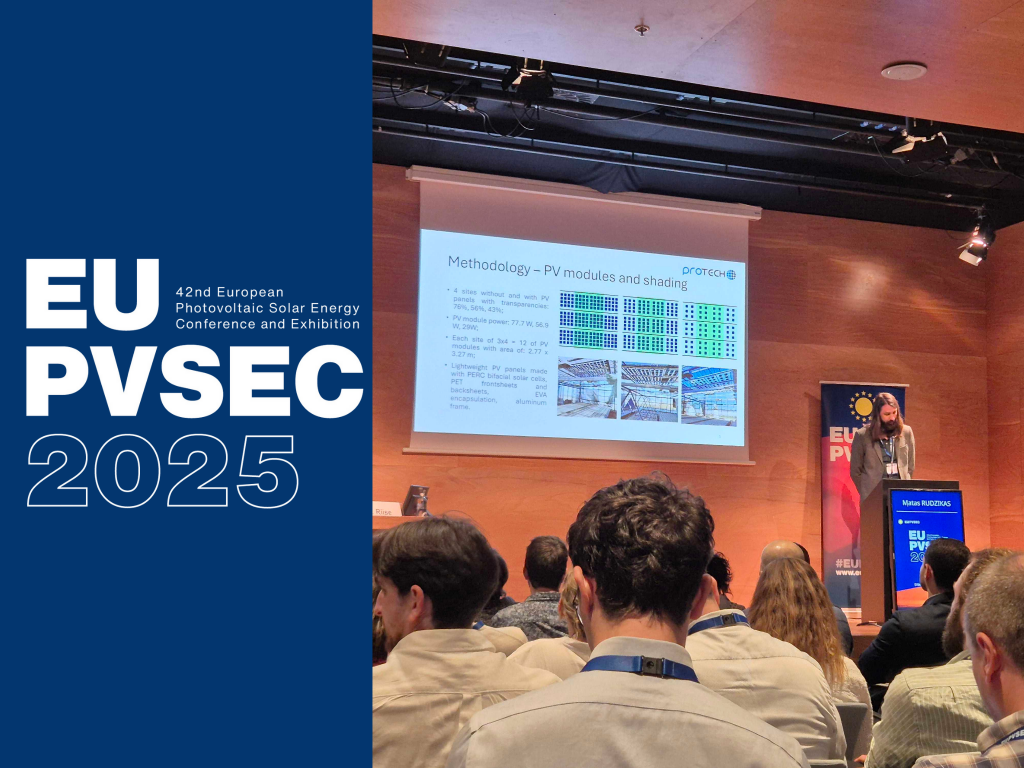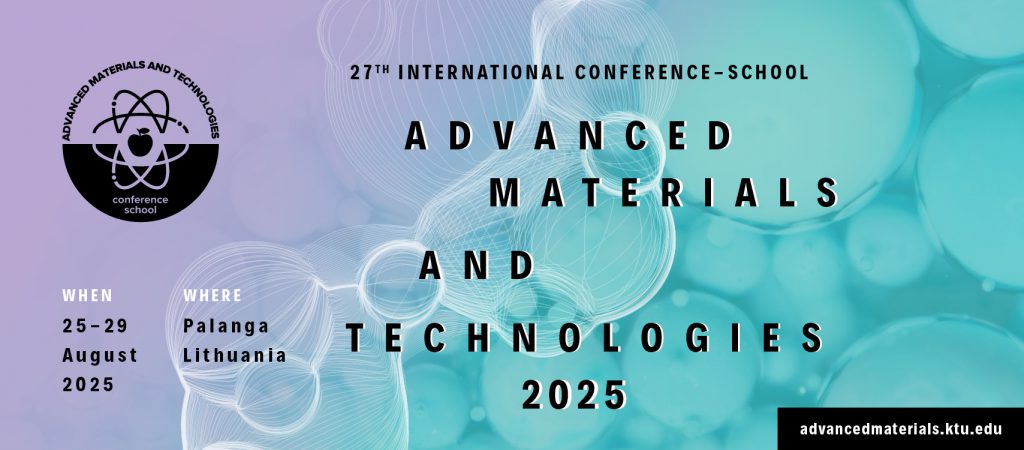Piloting novel cost-competitive bifacial IBC technology for vertical integrated European GW scale PV production value chain (IBC4EU)
Call for proposals: HORIZON-CL5-2021-D3-03
Topic: HORIZON-CL5-2021-D3-03-13
Type of action: HORIZON Innovation Actions
Granting authority: European Climate, Infrastructure and Environment Executive Agency
Grant Agreement No.: 101084259
Start/End: 1 November 2022/30 November 2025 (36 months)
EU contribution: 13 490 668.75 Eur, total budget 16 995 687.75 Eur
This project has received funding from the European Union’s Horizon 2020 research and innovation programme under grant agreement No. 792245
Coordinator: INTERNATIONAL SOLAR ENERGY RESEARCHCENTER KONSTANZ ISC EV (ISCK), Germany.
Partners: PERSPEKTYVINIU TECHNOLOGIJU TAIKOMUJU TYRIMU INSTITUTAS (PROTECH), Lithuania; NORSUN AS (NORSUN), Norway; ENERGYRA EUROPE BV (ENER), Netherlands; FUTURASUN S.R.L. (FUTURA), Italy; INTERUNIVERSITAIR MICRO-ELECTRONICA CENTRUM (IMEC), Belgium; COMMISSARIAT A L ENERGIE ATOMIQUE ET AUX ENERGIES ALTERNATIVES (CEA), France; NEDERLANDSE ORGANISATIE VOOR TOEGEPAST NATUURWETENSCHAPPELIJK ONDERZOEK TNO (TNO), Netherlands; INSTITUT FUR SOLARENERGIEFORSCHUNG GMBH (ISFH), Germany; COPPRINT TECHNOLOGIES LTD (COPP), Israel; LUXCHEMTECH GMBH (LUX), Germany; WIRTSCHAFT UND INFRASTRUKTUR GMBH & CO PLANUNGS KG (WIP), Germany; UAB VALOE CELLS (VC), Lithuania; VALOE OYJ (VALOE), Finland; HIGHLINE TECHNOLOGY GMBH (HIGH), Germany; KALYON GUNES TEKNOLOJILERI URETIM AS (KALYON), Turkey; ICARES CONSULTING (BI), Belgium.
Project website: (under development)
The IBC4EU project will develop cost effective and sustainable bifacial interdigitated back contact (IBC) solar cell and module technology on pilot line level. Based on business cases from the whole value chain – ingot, wafer, cell and module – we will demonstrate that IBC technology is the most promising choice for a fast launch of GW scale PV production in the EU. Cost competitiveness not only against future heterojunction (HJT) and Tunnel oxide passivated contact (TOPCon) technology but also present-day PERC and PERC technology will be demonstrated for the polyZEBRA and POLO IBC cell designs. To reach this goal, cost-effective production equipment will be developed and eco-design approaches will be employed to reduce the need for scarce materials such as silicon metal and silver and to maintain indium-free design. Pilot lines, interlinked on all levels of production, will help to reach GW scale mass production not only on cell but also on ingot, wafer and module level until 2030. The advantage of the chosen IBC technology is that it is based on existing production technology. Thus, the project will focus on improving existing processing steps on already available equipment, introducing some novel equipment to reduce the cost of ownership, and employing Industry 4.0 solutions for predictive maintenance, quality control and traceability. The feasibility of the chosen technologies and the innovative products will be evaluated by businessrelated parameters as well as performance characteristics which will be tested according to the relevant standards and in demo sites. The environmental impact will be monitored closely and eco-design approaches will be used to reduce the CO2 footprint, increase the resource efficiency and recyclability and improve in terms of circularity potential.





